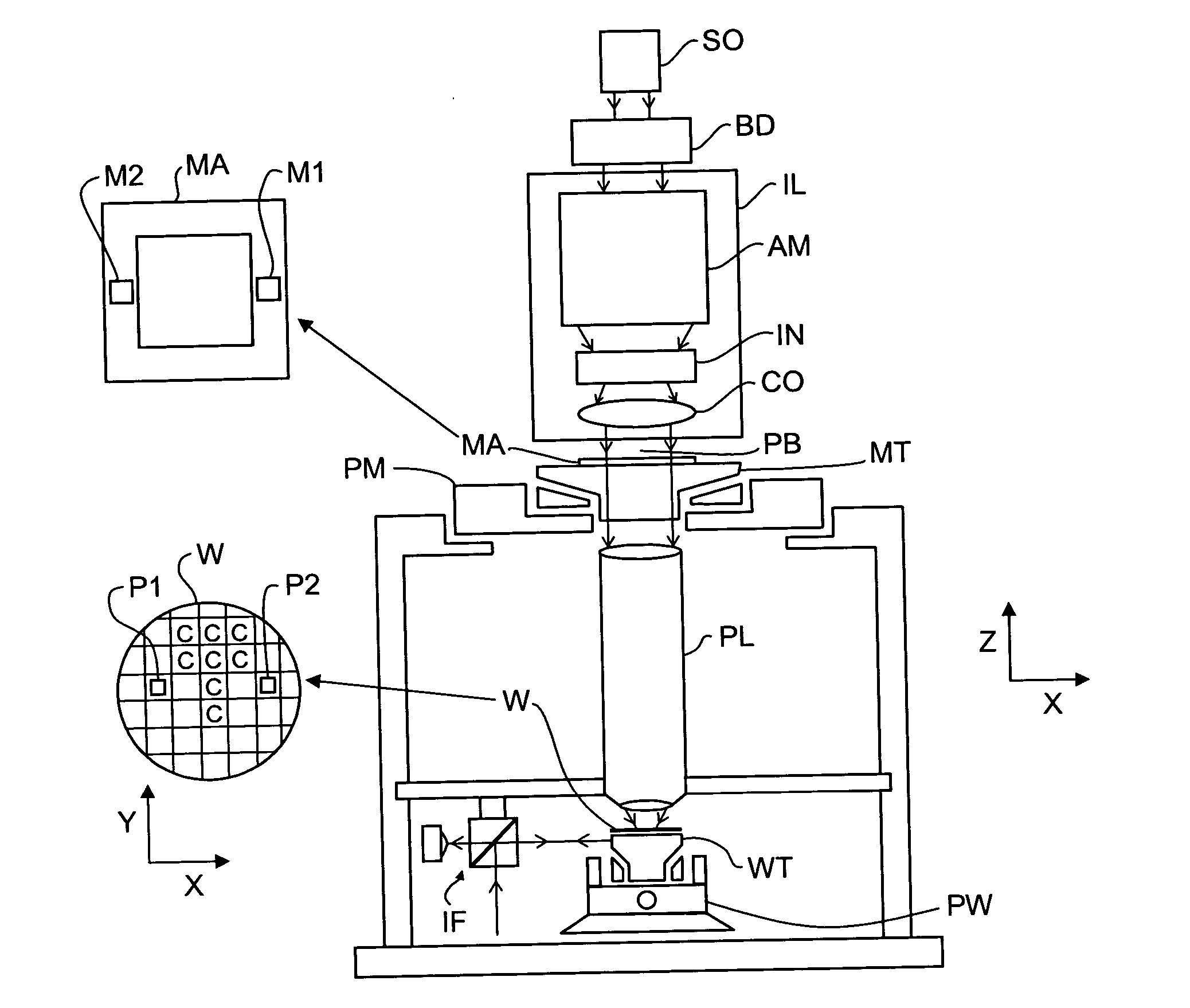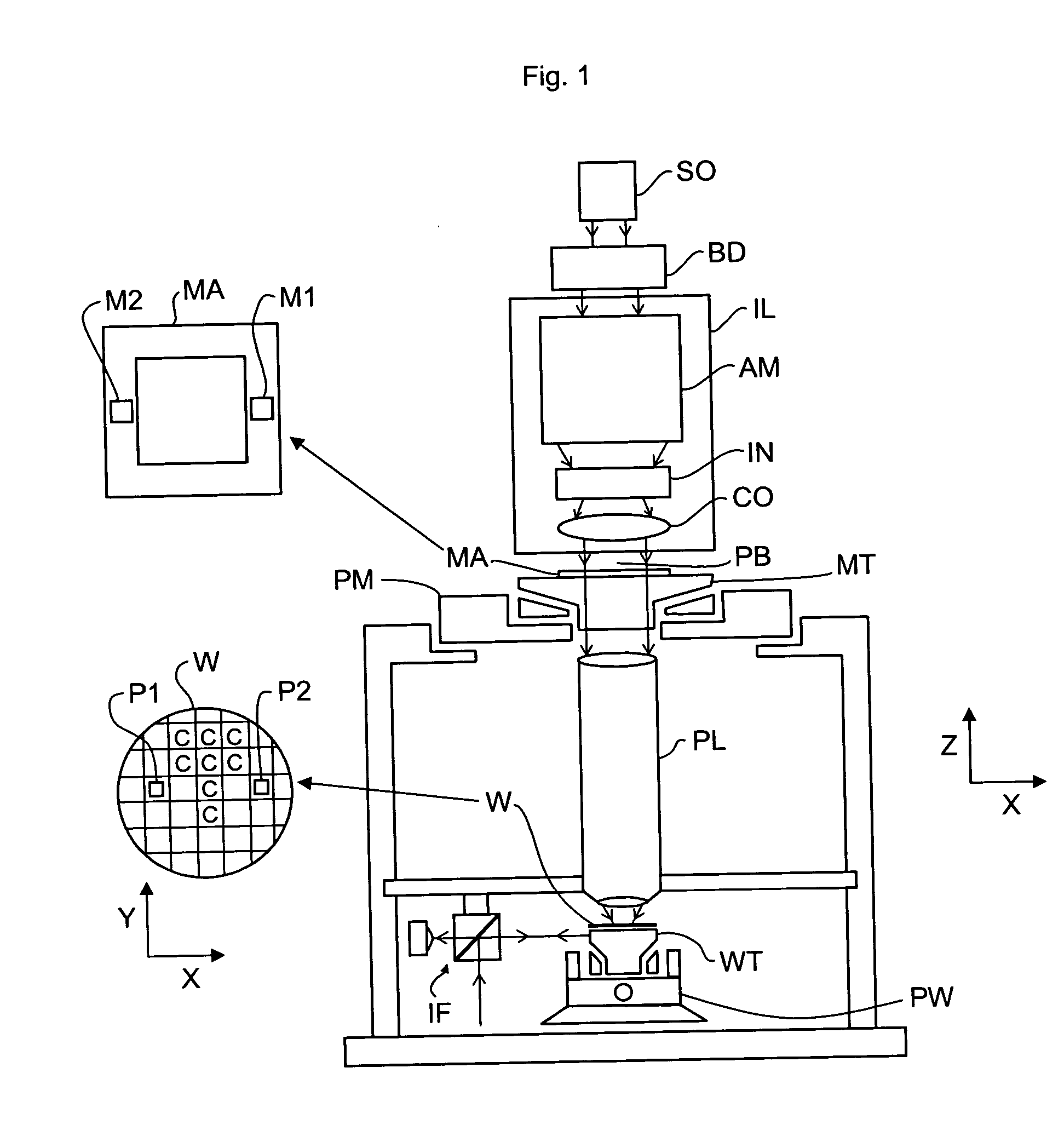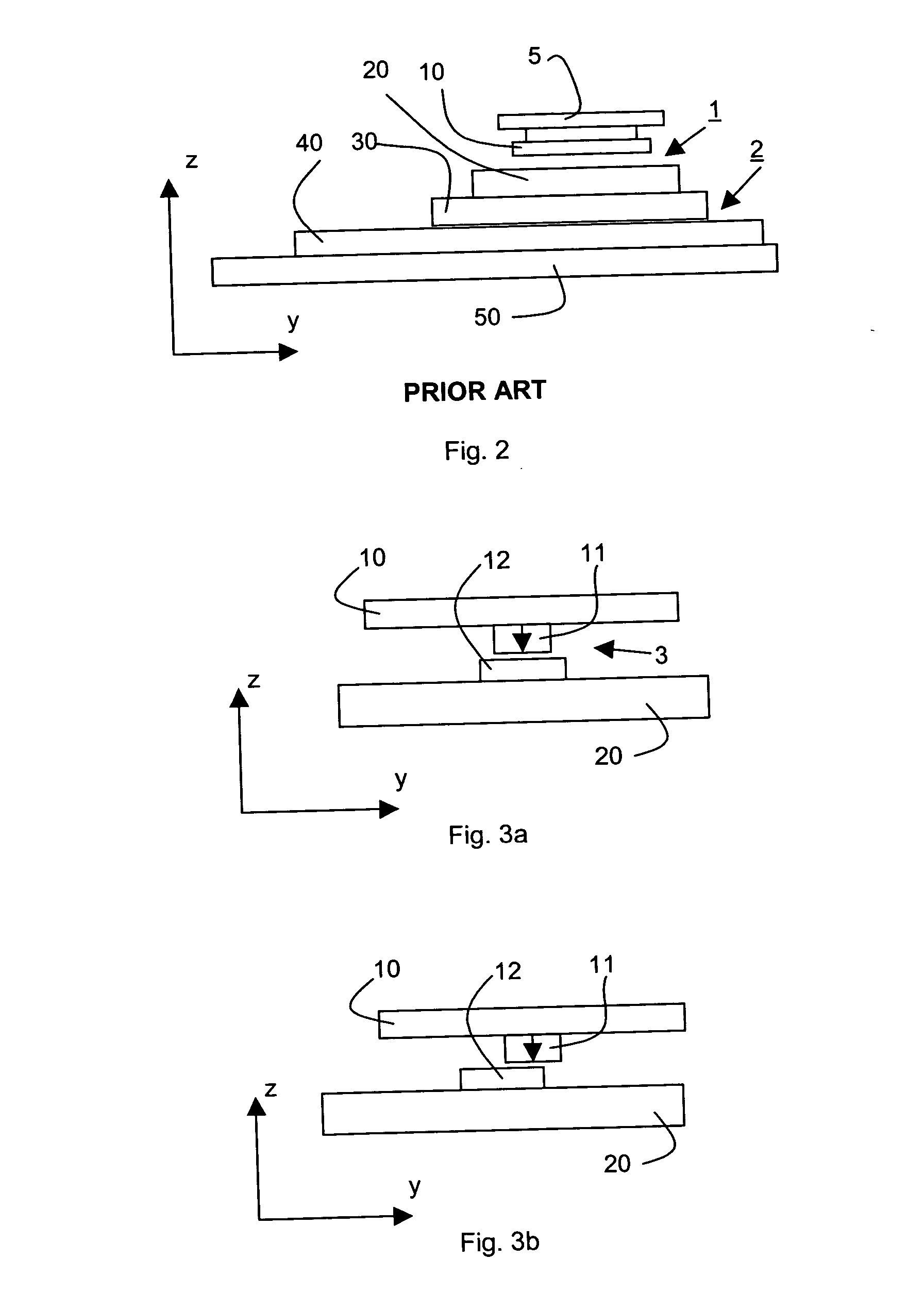Positioning device
a technology of positioning device and positioning axis, which is applied in the direction of dynamo-electric machines, printers, instruments, etc., can solve the problems of limited accuracy characteristic, inability to optimize the performance the drive unit can be considered oversized, so as to improve the dynamic response of the first drive unit, reduce dissipation, and accurate positioning of objects
- Summary
- Abstract
- Description
- Claims
- Application Information
AI Technical Summary
Benefits of technology
Problems solved by technology
Method used
Image
Examples
embodiments
[0084]FIG. 2 schematically depicts a positioning device as known in the art, comprising a first drive unit 1 mounted on a second drive unit 2. Such a positioning device can be applied to position an object table provided with a substrate or a patterning device. The first drive unit 1 comprises a first part 10 attached to an object table 5 and a second part 20 attached to a first part 30 of the second drive unit. The second drive unit 2 further comprises a second part 40 that can be mounted, as an example, to a frame or a balance mass 50. The first and second part of the second drive unit 2 can be positioned relative to each other over comparatively large distances in at least one direction (Y-direction in FIG. 2).
[0085] Typically, the displacement of >500 mm can be obtained with a micrometer accuracy. As an example, the second drive unit may comprise a planar motor, an H-type drive or a linear motor construction. Such drive arrangements may be applied in a lithographic apparatus as...
PUM
 Login to View More
Login to View More Abstract
Description
Claims
Application Information
 Login to View More
Login to View More - R&D
- Intellectual Property
- Life Sciences
- Materials
- Tech Scout
- Unparalleled Data Quality
- Higher Quality Content
- 60% Fewer Hallucinations
Browse by: Latest US Patents, China's latest patents, Technical Efficacy Thesaurus, Application Domain, Technology Topic, Popular Technical Reports.
© 2025 PatSnap. All rights reserved.Legal|Privacy policy|Modern Slavery Act Transparency Statement|Sitemap|About US| Contact US: help@patsnap.com



